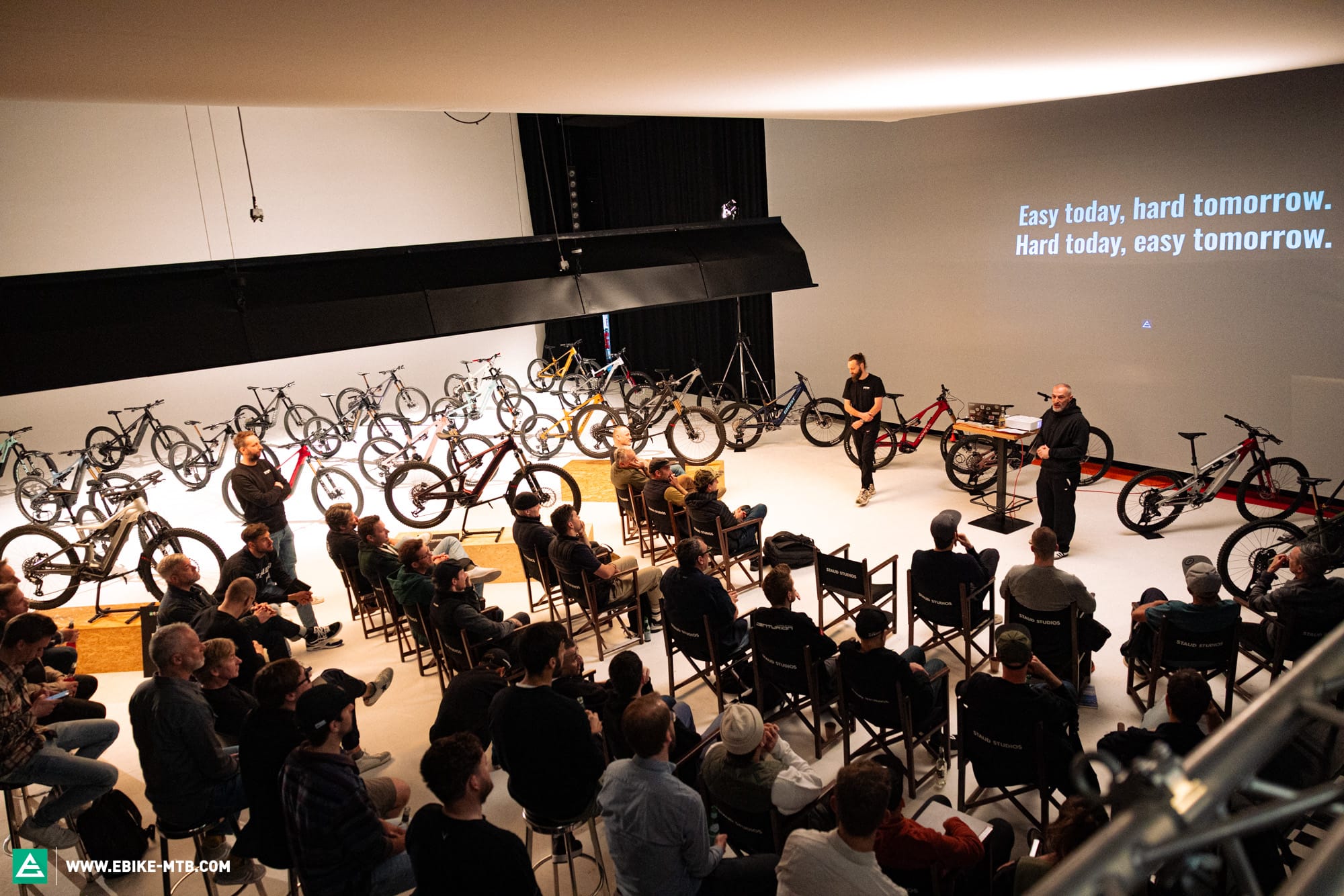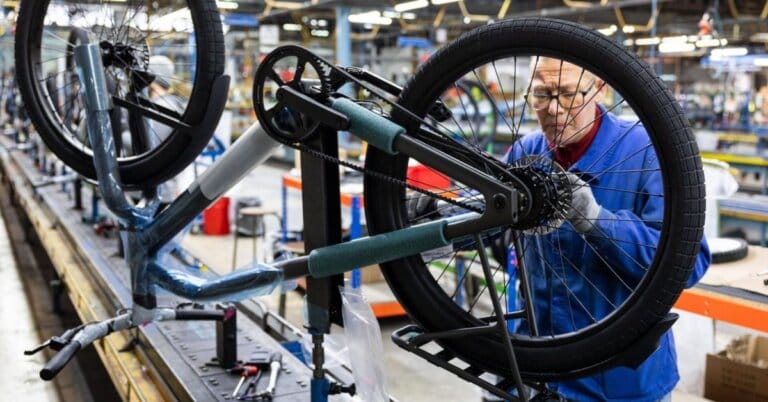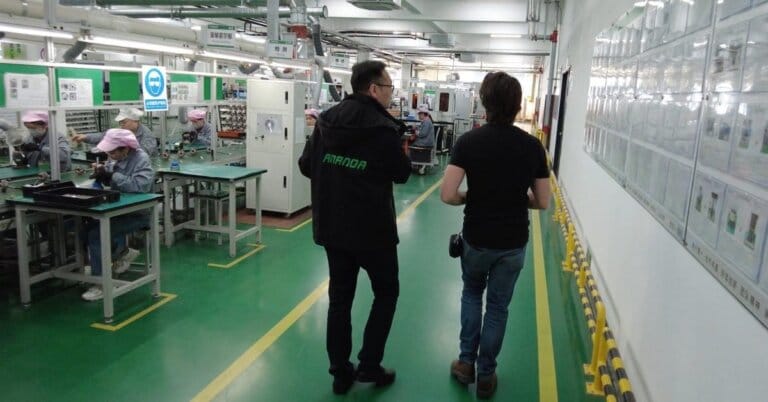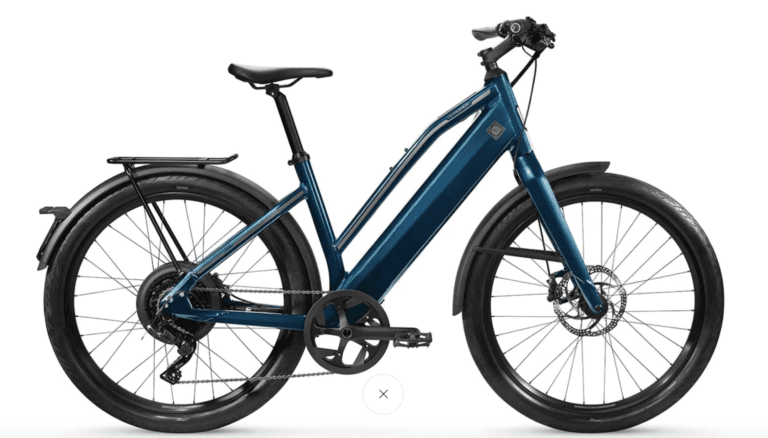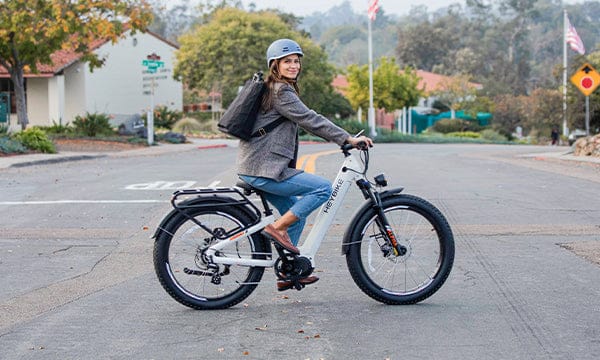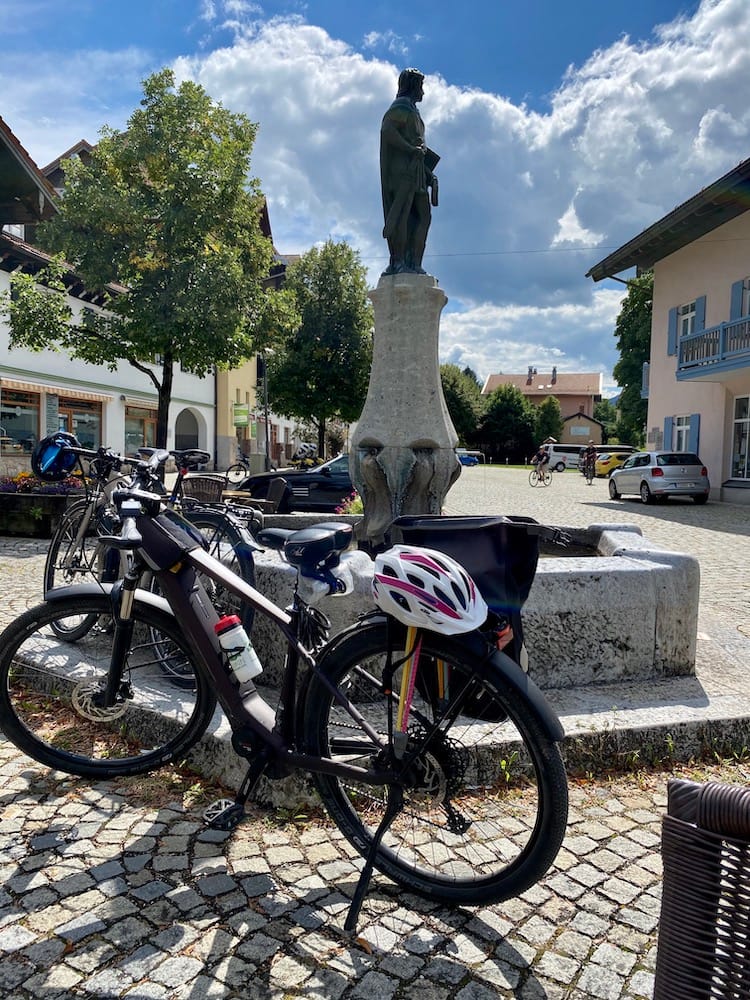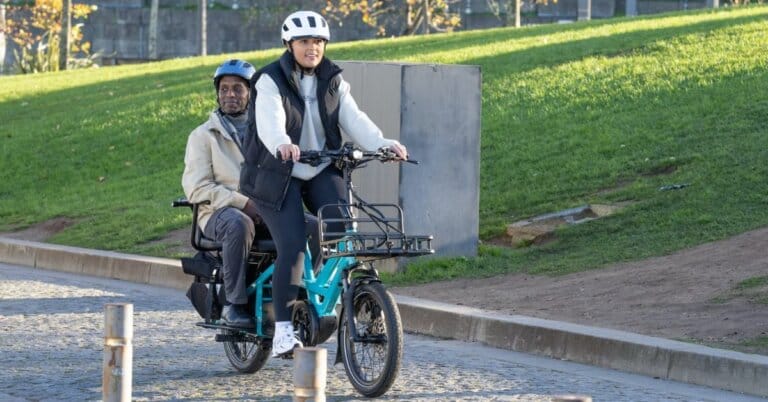E-MOUNTAINBIKE Think Tank 2025 – Are we dumb?
What does Kung Fu have in common with the latest generation of eMTBs? Why will e-bike motors soon be capped to 750 watts? What can we learn from Formula 1 for the bike world? We invited some of the most influential CEOs and leaders of the bike industry to avoid repeating the mistakes from three years ago, which led us into the current crisis.
Table of Contents
Our comprehensive E-MOUNTAINBIKE group test with 30 bikes revealed some critical insights. Reason enough to bring the most important eMTB brands together for a Think Tank to tackle current risks and challenges. Additionally, 2,400 of our readers contributed crucial input through a representative trend survey conducted ahead of the event – a big thank you for your engagement!


Over the past 10 months, the eMTB market has drastically changed: new brands have emerged, performance and specs have skyrocketed, triggering a flood of superlatives. But with the hype come risks – for the market and customers who might regret their bike purchase tomorrow.


The risks and issues are real: in the worst case, e-bikes could lose their legal status as bicycles, leading to mandatory helmets, type approval, registration, insurance, denial of trail access, and riding bans in certain areas.
Currently, some players are playing with fire, exploiting loopholes and unregulated aspects, and thus gambling with the freedom of eMTB riding. Worse yet, industry, influencers, media, retailers, and customers are all playing along. Many ignore – or don’t even realise – that the current arms race to increase performance, torque, and battery capacities has more disadvantages than advantages. It’s time to change course and take responsibility!


The good news: industry associations have already identified these risks, and self-regulation with sensible maximum values is well underway. Soon, motors will be capped at a maximum output of 750 watts, with other parameters currently under discussion. Our Think Tank wasn’t about specific values but about their implications for the eMTB world, fostering dialogue, understanding the background, and addressing crucial questions: Is innovation still possible under regulation? And if so, how? How can we involve retailers, industry, and the community?

The short answer: thanks to regulation, we’ll ride better, more exciting bikes with less wear, greater range, lower operating costs, yet still full power – thus steering innovation in the right direction.
Although this might sound absurd, it’s a serious question. Even for us at E-MOUNTAINBIKE Magazine. Because it’s simple. Too simple. And unfortunately, it works. Almost every brand, influencer, and media outlet currently promotes superlatives and specs as if they were the only aspects that truly define a bike – as if hair color defined a person. Come on, those shallow times are long over, right?!
“21.2 kg, 1000w, 120 Nm DJI Motor, 800 wh battery, 170mm fork, 160 mm rear 🤯”. Unfortunately, this kind of spec-overload is far too common these days.
The result? Ultimately, it’s not the truly great bikes that come out on top, but those that dominate on paper. Long travel, full power, big battery, low system weight – we’ve seen similar trends with analogue bikes in the past, and they certainly weren’t better bikes.
Yet, every brand is trying to outdo itself and its competitors: 90 Nm, 105 Nm, 111 Nm, 120 Nm… what’s next? Yes, other manufacturers will follow, yet the drawbacks are conveniently ignored.
And what about us riders? The results from our trend survey of 2,400 participants (confirming our annual survey with over 14,000 respondents) show this topic isn’t as hot for customers as marketing makes it out to be. But more on that shortly.
The problem with numbers
Testing 30 eMTBs head-to-head, measuring range, putting them through “Impossible Climb Challenges”, and dismantling the top bikes to weigh and analyze each component seems crazy.

But it’s worth it. This year, our annual E-MOUNTAINBIKE group test went even further, showing that some developments are heading in the right direction, while others are going entirely wrong – which is mainly related to motor systems. Some key takeaways:
- More maximum power = more consumption and wear.
- Bigger battery ≠ more range – you can’t cheat physics!
- Power is nothing without control.
The result? Bikes aren’t necessarily riding better; despite bigger batteries, the range often suffers, and bikes become increasingly expensive to buy and maintain. Alongside some advances, we’ve seen setbacks in design and aesthetics, too.

Manufacturers, retailers, influencers, and media define themselves by torque, watts, and watt-hours, turning bikes into spec-monsters rather than real trail machines.
E-MOUNTAINBIKE Think Tank – key brands from around the globe
Criticizing is easy, but improving things is a real art. That’s why we hosted another international E-MOUNTAINBIKE Think Tank, bringing together over 60 representatives from more than 30 brands worldwide – including CEOs from Bosch, Specialized, FOCUS, P2/Porsche, SRAM, Mahle, Pivot Europe, Yeti Europe, as well as many product managers, engineers, and marketing experts – to the Staud Studios in Leonberg.









Here’s an overview of the manufacturers and stakeholders involved:
Accell Group (Haibike, Lapierre, Ghost), AMFLOW, BH, Bosch, Brose, Cannondale, Canyon, Centurion, Comodule, Compositence, DJI, DT Swiss, FOCUS, Giant, Mahle, Merida, MOUNTAINBIKE Magazin, Pivot, Porsche, Propain, Rocky Mountain, Scott, SEG, Shimano/Paul Lange, Specialized, SRAM, Supertrail, Trek, UCI, Unno, Velotech, Whyte, Yeti, YT, ZF
Leading up to the Think Tank, there were many different opinions about the current risks, including statements like “Bosch & Co just want to defend their market position against DJI” or “regulation will kill innovation.” However, it quickly became clear that fundamental understanding and crucial background information about these risks were missing – making the exchange and workshops even more essential. By the end of the day, reactions had turned around by as much as 180 degrees. The best part: we achieved clarity and consensus on what’s needed to responsibly and safely drive the eMTB world forward.




Kung Fu in business – Greed or control?
What does throwing punches have to do with the ongoing crisis in the bike industry? If you listen to Kung Fu master Taner Erdogan, one of the world’s most renowned teachers, you quickly realize: quite a lot!
Still somewhat tired from the long night at the E-MOUNTAINBIKE Awards the previous evening, Think Tank participants attentively listened to the core Kung Fu principles demonstrated live by Taner.



“More, more, and still more” – greed throws us off balance in almost every aspect of life. In Kung Fu, you lose control immediately if you overreact – a rushed punch, a wrong impulse, and you lose balance.


This pattern is all too common in the bike industry. Driven by fear of missing out or falling behind the boom, greedy orders were placed, assuming perpetual growth. But focusing only on maximum force without knowing your position and limits quickly leads to dependency and trouble.
We’ve seen exactly that happen in the past three years, and it could easily happen again – not through procurement pitfalls or market forecasts this time, but due to current product developments and the looming threat of new legal classifications for e-bikes.

Killjoys or drivers of innovation?
How much power do we actually need? Why are cycling associations pushing for regulation? Are these regulators really killjoys?
How much power do we need?
Our group test showed that 600 watts peak power is already sufficient. We created the Impossible Climb Challenge to test ultimate climbing capabilities and nuances between bikes and motor systems. However, such extreme technical climbs are rarely encountered in real-world riding. Interestingly, the Orbea Wild, which comes equipped with a Bosch CX Gen5 motor delivering a maximum of 600 watts, was the second-best climber, outperforming stronger bikes like the Specialized Levo with 720 watts and the UNNO Mith featuring the DJI Avinox system with 1000 watts. Lots of power can help, but motor control and traction are far more critical. The bike itself – geometry, suspension, tires, and setup – matters just as much, if not more. In short: having the best motor or highest specs means nothing if everything else isn’t dialed in.

Our survey data from nearly 17,000 eMTB riders reinforces this notion: only about 5% primarily use Turbo/Boost modes, while over 60% ride in Tour and Eco modes, and around 35% in eMTB/Trail modes. When evaluating motors, riders rate natural feel, efficiency, and quiet operation as four times more important than maximum power. Maximum torque ranks only fifth among key motor factors. Does this mean that the arms race isn’t such a big deal to consumers? Evidently yes – it’s unfortunate when manufacturers, retailers, media, and influencers still prioritize these superlatives.


Why do cycling associations want regulation?
Legally classified as Electrically Power Assisted Cycles (EPACs), e-bikes enjoy a special status in Europe as Active Mobility because the rider’s contribution is significant enough to classify them as bicycles rather than motorcycles. The current power arms race risks triggering regulators and certification bodies to impose type approvals and other restrictions. The potential consequences for the industry and the community would be severe. Therefore, proactive self-regulation, as currently implemented by cycling associations, is critical to maintain clarity and ensure that e-bikes remain classified as Active Mobility, which is clearly distinct from Passive Mobility (excessive power, high support ratios, throttle controls). More details can be found in this ZIV press release.

Are white collars really killjoys?
A regulator in a suit in Berlin might seem far removed from the trails. But that’s how politics works. Regulations aren’t made for mountain bikers in hoodies at bike workshops or perfectly groomed bike parks. They’re created in committees, boards, and through tough negotiations. Instead of resisting, we should be grateful someone is doing the boring work for us. As we’ve pointed out in our article “No club, no trail” mountain bikers often have organizational shortcomings. This engagement is essential for representing our interests, especially since there are plenty of actors working against us. We certainly shouldn’t be adding to that from within the scene! Manufacturers might find it tempting to avoid taking clear positions or blocking decisions, but our industry has become far too significant to shirk responsibility.
What E-Bikes and Formula 1 Will Have in Common in the Future – Workshop Part 1
Fears and prejudices about regulation aren’t only expressed on forums – like those of our friends at eMTB-News.de– , but also among many manufacturers and industry representatives. Common arguments include: “Regulation hampers innovation,” or “Innovation can only thrive in a free market.” But does a regulation capping maximum power at 750 watts truly hinder innovation in the E-bike sector?
The question addressed in the first part of the workshop was: ” Is innovation still possible if we limit ourselves,?”

The short answer is: Yes, and even more than before! Formula 1 was repeatedly cited as an example, illustrating how technical regulations steer development in a clear direction and significantly challenge teams’ creativity and problem-solving skills. Like in Formula 1, clear guidelines in the eMTB segment could shift the development focus toward smarter solutions rather than just raw power. Instead of “higher, faster, further,” the emphasis could be on smarter, more efficient, and safer innovations. Some regulations are designed explicitly to protect drivers, and in this case, we must protect our sport!



After initially heated debates, a consensus quickly emerged. Regulation was unanimously seen as a great opportunity to steer the industry in the right direction – with better bikes as the outcome. Instead of competing primarily on maximum performance, torque, support levels, and watt-hours, development will shift way more towards efficiency, integration, noise levels, thermal stability, weight, UX, and distinctive features of the bike itself. Other areas like business innovation, total cost of ownership (wear and maintenance), sustainability, design, digital experience, and ride feel were highlighted, too.

Intentionally, the discussions that day didn’t delve into technical details or specific figures. Instead, they focused on potentials and general directions – precisely the awareness and understanding required to unite the community rather than divide it.

Communication & Responsibility – Workshop Part 2
The second part of our workshop focused on how manufacturers could adapt their communication and marketing towards end customers and dealers. Our trend survey data clearly shows that the influx of newcomers to the eMTB world is slowing – and we’re convinced that performance superlatives won’t attract new riders either. Have you ever heard of someone becoming a Formula 1 fan simply because the cars suddenly had an extra 90 horsepower?

So, what exactly needs to change in our communication? Answers from workshop groups were remarkably consistent. To avoid repetition, we’ve compiled some of the key aspects here:

“The answer is clear and simple: we need to return to real marketing — not to selling facts and figures, but to selling emotions. The kind of things that can’t be easily conveyed on paper. That’s why we need to engage more deeply.”
Roland Czuday, Product Manager eMTB at Cannondale

“We need to shift our focus — to become more inspirational, more community-driven, not just more radical and faster.”
Andreas Knodel, General Manager Pivotcycles EU

“We need to actively talk about regulation itself, because regulation is often perceived as something negative. It’s our job to ensure customers understand that these rules exist to secure continued trail access. We have to educate the market.
Once that understanding is in place, the rest will follow naturally: imagine standing in a bike shop where all bikes share the same power figures — suddenly, the conversation shifts. You start talking about what really matters: the character of the bike, its ride feel, its design. You’re no longer just selling numbers — you’re selling the bike.”
Julian Öncü, Director Brand Management P2 ebike GmbH powered by Porsche

“Right now, we’re caught in a numbers game. If we put all bikes into an Excel spreadsheet, we’ll find a category where each one comes out on top — but that’s not how great bikes are chosen.
We need to shift the focus: put brand, emotion, and design first — not just the numbers. Let’s talk about where and how a bike is made, what it stands for, and how it inspires.
Because ultimately, it’s not just about specs — it’s about getting people, especially the next generation, excited about bikes.”
Felix Stix, Product Manager FOCUS Bikes

“We need to put the customer back in focus — and shift from performance to experience.
Inclusion means breaking out of our bike industry bubble. There are so many people out there who aren’t riding yet. We need to reach them, inspire them, and get them on bikes.
And we need to better educate our dealers so the customers get the bike they need.”
Hannes Genze, Head of Research and Development MERIDA & CENTURION GERMANY GMBH

“Just because we’re letting go of our key selling points today doesn’t mean we can’t create even stronger ones tomorrow.”
Kieran Page, ZF / EMTB Technical delegate at UCI
Consensus is reached – what’s next?
Regulation is coming, and the market will consequently change soon.
Now it’s up to the associations to finalize the technical details of the regulation in their committees. At the same time, manufacturers must adapt their product, communication, and marketing strategies, clearly defining their brands and unique selling points (USPs). Manufacturers are also tasked with creating understanding among media and influencers regarding the new regulation to achieve widespread acceptance within the community and retail. The good news: the solutions are tangible and understandable, and the advantages of self-regulation should now be clear. You’ll find ample arguments supporting this throughout this article!


Of course, we remain committed, will soon gather new market data, and focus our editorial work on current developments, closely engaging with key industry stakeholders. Our goal today remains unchanged from our first E-MOUNTAINBIKE Think Tank ten years ago: to develop e-mountain biking in a sustainable way, and make the greatest sport in the world even better!
And Action! The Leonberg Protocol
A strategy is only as good as its implementation – hence this concise action plan for stakeholders (manufacturers, magazines, influencers, retailers, and community) with clear impulses:
1. Combining innovation & regulation effectively
We view regulation as an active opportunity to foster innovation rather than hinder it. Clear guidelines offer orientation, security, and sustainable development, ensuring that bikes retain their status as bicycles while improving practical, relevant features. For this, we will collect robust market data to anticipate needs and trends early in the development process.
2. Rethinking communication & responsibility
Returning to genuine marketing: we will change our communication – away from clickbait and number-driven promotion toward authentic marketing that conveys emotions, product USPs, and brand values. Experience over Excel: we will tell stories about brand values, heritage, design, and user experiences, turning products into memorable experiences. We will communicate responsibly, providing signals of guidance rather than just generating attention. Additionally, communication heroes from tests and reviews will be reconsidered: maximum specs lose importance while ride dynamics, usability, design, efficiency, user experience, and smart features gain prominence. We will openly criticize and address anyone disregarding fair play and risking the market, as these bad actors endanger our common eMTB playground.
3. Promoting collaboration & dialogue
We will create spaces for honest dialogue – within the industry, with politics, and with the community– because only joint action can secure the future of eMTBs. We build bridges between industry, politics, and community. Only through collective action and clear communication can we maintain and expand our scope for action. Community meetups: exchange views, introduce new perspectives, and foster understanding of the regulation. Companies should launch internal and external educational campaigns.
4. Demonstrating stance & ensuring fair play
We advocate for a fair playing field. Those who exploit the system and the existing loopholes threaten the entire industry and thus the freedom of the trail community. We must clearly call out misconduct: bad actors who seek advantages through rule-breaking must be openly addressed. Making responsibility visible: everyone – from CEOs to content creators – bears responsibility for the bigger picture. Those clearly advocating their position strengthen the industry as a whole.
5. Understanding markets & attracting new audiences
We’ll look ahead. Market access must broaden, distribution must become more professional, and the understanding of real needs must deepen. Many within the bike bubble remain exactly there – inside the bubble. We must ask ourselves: how can we attract new people and audiences? How can we better integrate retailers, making them the backbone and facilitators of our industry?
What’s your take on self-regulation? Got ideas, criticism, or any other feedback?
Conclusions – E-MOUNTAINBIKE Think Tank Leonberg
Are we dumb? No, we have allowed recent developments and hype to unsettle and drive us, with the risk of going down a path we’ll regret later. This is natural. What’s crucial now is our next move, and we have no choice.
No player can justify taking short-term market advantages if medium to long-term consequences and risks outweigh them. The Think Tank with key industry representatives made it clear: we must take responsibility now and implement sensible self-regulation to steer innovation positively rather than hinder it.
The course has been set. Now we’ll see if we act decisively, find consensus in the details, and choose wisely. Three years ago, when the current bike crisis started, few knew better. Now we all do. So let’s act accordingly.

Do you have something to contribute as well? The E-MOUNTAINBIKE Think Tank is an open platform, and we warmly welcome additional industry representatives to future events. For further information or inquiries, please contact Susanne Feddersen at [email protected].
What developments would you like to see from the industry? We advocate for you and can bring your feedback into the Think Tank discussions.
Words: Robin Schmitt Photos: Jan Richter, Jan Fock, Robin Schmitt

